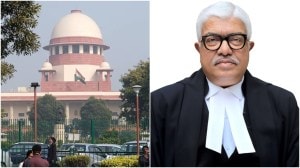Ministry drags feet over midday scheme
NEW DELHI, APRIL 10: Though the Planning Commission has quite clearly told the Human Resource Development Ministry that it cannot afford ...

NEW DELHI, APRIL 10: Though the Planning Commission has quite clearly told the Human Resource Development Ministry that it cannot afford the midday meal scheme in its current form any more, the latter has refused to react so far. The Planning Commission wants a sharper focus to the scheme which currently covers 9.75 crore students in primary classes in all Government, local body and Government-aided schools. The Planning Commission has been arguing that the programme which was launched in 1995 needs to exclude surplus foodgrain states such as Punjab (as the incentive is 3 kg of dry rations for every child in a month). In fact, at the recent State Education Ministers’ conference, the Punjab representative even demanded the cash equivalent of the expenditure on the scheme so that he could spend it on uniforms and textbooks for girl school children.
The Planning Commission has even suggested a new formula for midday meal scheme eligibility: areas should be selected on the basis of low nutrition or low schoolattendance, since the twin aims of the scheme are to improve attendance and enhance nutritional levels. Which is why that though the HRD Ministry had asked for an allocation of Rs 1,091 this year, the Planning Commission could provide only Rs 1,031 crore. The other option the Planning Commission has offered is the transfer of the midday meals scheme to the states. But with states not even being able to contribute their share to convert the dry rations into cooked meals — the original intent of the scheme — this is not likely to happen.
The scheme takes up 60 per cent of the Union Budget’s annual elementary education allocation. And, in fact, the HRD Ministry had initially asked for Rs 3,000 crore this year to start making this scheme fully operational.
The Ministry’s own initial field reports indicate an increase of about 10 per cent in the enrollment of children in primary schools, but there is yet to be a full-fledged evaluation of this Centrally-sponsored scheme.



- 01
- 02
- 03
- 04
- 05




























